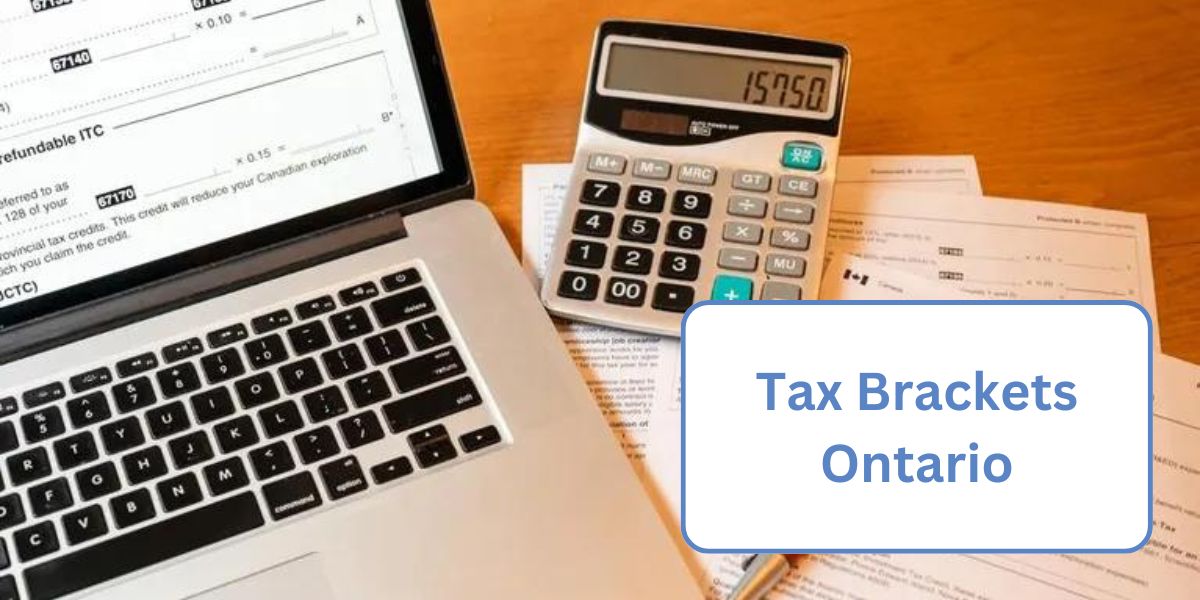Discover everything you need to know about tax brackets in Ontario. Learn about the different taxes you might encounter and the rates you could be paying.
Tax Brackets Ontario
In Ontario, your income tax is based on how much you earn after subtracting any allowed deductions from your total income. The province uses a system where the tax rate increases as your income goes up.
Your income decides which federal and provincial tax rates apply to you. Ontario has different tax brackets, each with its own rate. This means that as your income moves into a higher bracket, only that portion is taxed at the higher rate.
| Important Links |
| WASPI Female Payout Date 2024 |
| Universal Credit Payout Date Confirmed |
| 2024 SSS Contribution Table Updated |
This system is called progressive taxation. It ensures that higher incomes are taxed more, while lower incomes pay a lower percentage in taxes.
Are you in Ontario and curious about tax brackets and other taxes? Check out this post for all you need to know!
New Tax Brackets Ontario for 2024
In 2024, Ontario’s tax brackets and personal tax credits will increase by 4.5%. This means more money you earn before taxes go up. However, the $150,000 and $220,000 income levels won’t go up with inflation.
| Taxable Income 2024 | Income Tax Rate 2024 |
| Till 51,446 | 5.05% |
| Above $51,446 till $102,894 | 9.15% |
| Above $102,894 till $150,000 | 11.16% |
| Above $150,000 till $220,000 | 12.16% |
| Above $220,000 | 13.16% |
The Canada Revenue Agency has confirmed the updated factors for 2024, including tax brackets and rates. Taxes are typically deducted from your pay throughout the year by your employer and sent to the government on your behalf.
Tax Brackets Ontario Overview
| Post Heading | Tax Brackets Ontario |
| Country | Canada |
| Taxes | Income TaxHSTEmployer Health TaxBeer and Wine TaxCorporations Tax |
| More Information | Locate Here |
What Are Different Taxes in Ontario and What are the Tax Rates?
In this section, we’ve outlined some common taxes imposed by the Ontario Government, in addition to personal income tax.
Sales Tax (HST): Ontario’s sales tax is called Harmonized Sales Tax (HST). It combines the federal GST and provincial RST into a single tax, effective since 2010. You only need to pay one tax rate in Ontario, which is 13%. Some products and services are exempt from HST.
| Important Links |
|---|
| SASSA Pension Dates July-August 2024 |
| Centrelink $1,500 Payment 2024 |
| Canada Minimum Wage 2024 |
Employer Health Tax (EHT): This is a payroll tax Ontario businesses pay on employee compensation, including salaries, bonuses, and benefits. It helps fund Ontario’s healthcare system. The EHT rate ranges from 0.98% to 1.95%, depending on your business’s payroll.
Beer and Wine Tax: The price of beer made by Ontario microbreweries includes beer and wine taxes. The rates are adjusted based on Ontario’s Consumer Price Index over the last three years.
Corporations Tax: Businesses with a permanent establishment in Ontario pay federal and provincial corporation taxes. Ontario’s corporate tax rates range from 12.2% to 50.17%.
Estate Administration Tax: When you apply for and receive an estate certificate, you’ll need to pay a tax based on the value of the estate. This tax is initially paid as a deposit when you apply to the Superior Court of Justice. The rate for this tax is 1.5% of the estate’s total value.
Managing your taxes and deadlines can be easier if you create an online account with the CRA. This account allows you to make payments quickly and easily, manage your tax information, and keep track of how much you owe.
Concluding Words
Tax credits and deductions are ways to reduce how much you owe in taxes or increase your tax refund. Tax credits directly lower the amount of tax you owe, but not all credits can get you a refund. Deductions are expenses or amounts of money subtracted from your income to lower the amount of income that gets taxed.
Now that you understand Ontario’s tax rates better, you can figure out if these credits and deductions apply to your business and how to avoid tax issues. Don’t forget to claim any available tax credits or deductions that you’re eligible for.

